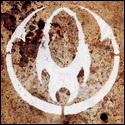|
Entheogen posted:What I would like to do is generate a lot of huge display lists that in no way would fit at once in my GPU memory, but I only need to render one of them at a time.
|
|
|
|

|
| # ¿ Apr 30, 2024 00:23 |
|
I'm still puzzled by your thousands of triangles approach. In any case, I don't know if you'd really gain a lot of speed by caching the display lists in main memory over recompiling them as necessary. EDIT: vvv I'll put together a simple demo. StickGuy fucked around with this message at 09:56 on Jul 24, 2008 |
|
|
|
Entheogen posted:I will try raycasting next, but that looks a lot harder than what I am doing now. What would you suggest other than raycasting that I could also give a try?
|
|
|
|
Entheogen posted:So it doesn't draw view oriented quads. They remain constant in their position, but the 3d texture coordinates is what changes based on view?
|
|
|
|
The slicing technique is definitely fill-rate limited. There are some optimizations you can do such as clipping the quads to the data volume, but it's still limited by the number of slices through the data volume itself that you draw. You can experiment with the number of slices that you need to get a reasonable appearance. A reasonable rule of thumb is to have at least one slice pass through each voxel. You can also probably combine it with your previous technique to do some sort of subdivision to produce more partial slices in parts of the volume where things are visible and few or no slices where nothing is visible. As far as your lines, they look a bit strange, but it's hard to tell what should and shouldn't be there. Can you post a screen shot of the linear shader where the lines are absent for comparison? Also, what are the dimensions of the volume you're visualizing? Are you using a floating point texture?
|
|
|
|
shodanjr_gr posted:Does anyone have any suggestions on where I can go from here?
|
|
|
|
shodanjr_gr posted:Im writting some OpenGL 1.1 (or it could be 1.2) code, and I doesnt seem to be running in hardware mode (it is extremely fill-rate limited). I dont think I am using any unsupported calls... You're also being incredibly vague about your application. What is it and what does it do? What do you mean by fill rate limited (i.e. what and how many things are you drawing that need to be filled)? Are you using any shaders? If so, what are you doing with them? What other things are you using? Lights? Textures? Blending? etc, etc
|
|
|
|
shodanjr_gr posted:I render at 512 * 512 resolution, a scene comprising of 2 spheres and a quad, 3 times (i'm doing shadowmapping), and this thing draws at LESS than 1 frame per second and hammers the CPU like there is no tomorrow.
|
|
|
|

|
| # ¿ Apr 30, 2024 00:23 |
|
slovach posted:RGB(255, 0, 0) seems to give 0x000000FF. Ok... but 0x000000FF appears to be blue.
|
|
|





